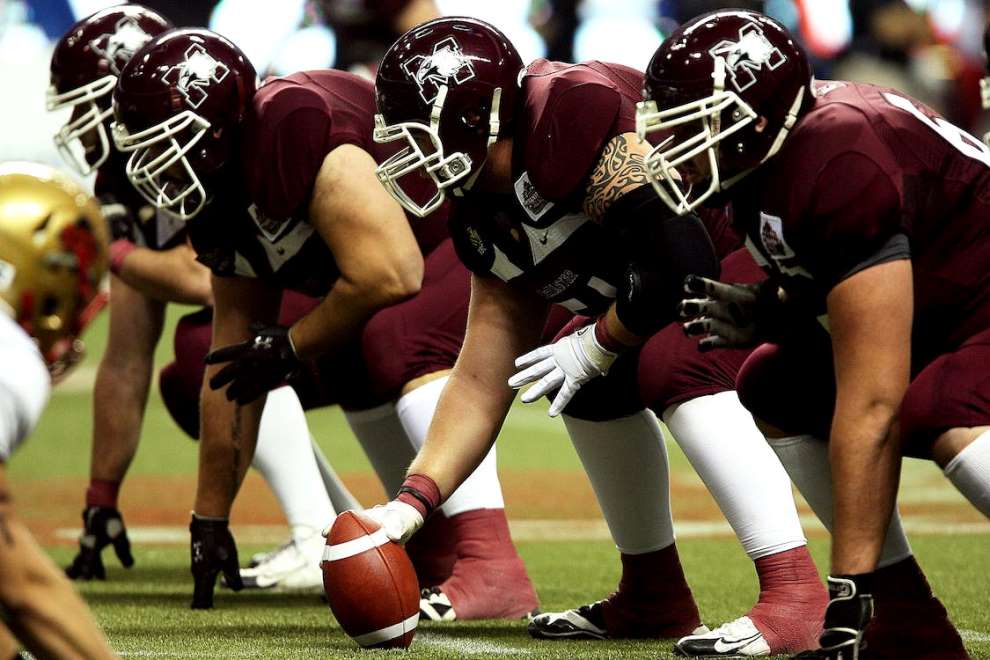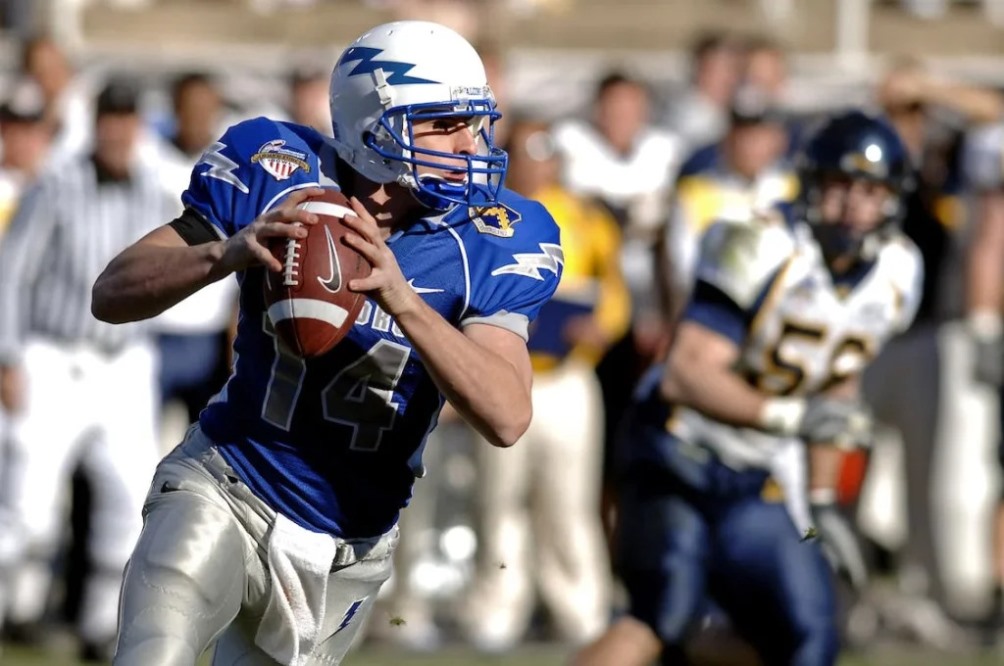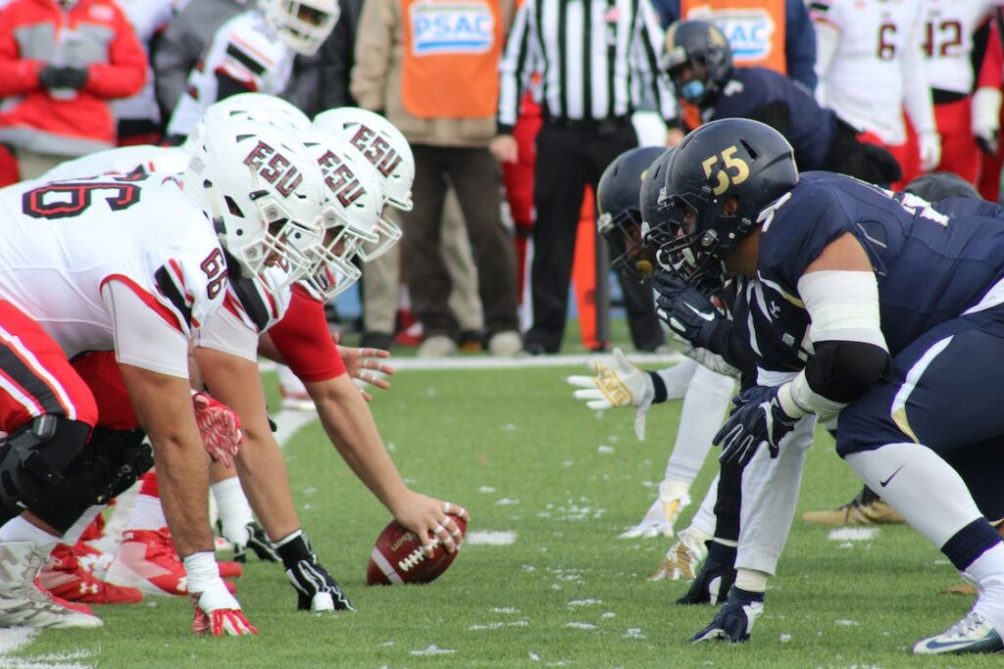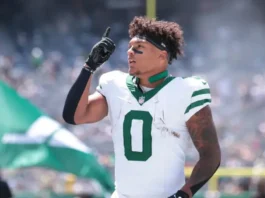
In American football, strategies and formations are just as critical as the players on the field. Among these defensive tactics, the 3-technique in football holds particular importance. But what is a 3 technique in football ?, and why is it so significant in defensive plays? Let’s dive into the details of this impactful position and explore how it shapes defensive strategies
Understanding Football Techniques
To grasp the 3-technique’s importance, we must first understand the broader context of football techniques. These techniques refer to the specific alignments and responsibilities of defensive linemen. Numbered from zero to nine, each technique represents a different position along the offensive line and correlates with distinct roles and tactics.
The Basics of Defensive Line Techniques
In football, defensive linemen are assigned techniques based on their positioning relative to the offensive line. These techniques are numbered, with each number corresponding to a specific alignment. Understanding these techniques is essential for grasping the role and importance of the 3-technique.
Defensive line techniques are fundamental to the game’s defensive strategy. Each technique aligns a player in a position designed to exploit weaknesses in the offensive line and disrupt the offense’s rhythm. Coaches meticulously train players to master these positions, emphasizing footwork, hand placement, and leverage. By knowing the specific responsibilities and alignments, defensive linemen can execute complex schemes that confuse and overpower their opponents.
Zero Technique
- Positioned directly over the center.
- Focuses on clogging up the middle.
The zero technique, or nose tackle, is the cornerstone of many defensive formations. This player lines up head-to-head with the center and is primarily responsible for controlling the A-gaps on either side of the center. Their main objective is to anchor the line, making it difficult for the offensive line to move them. This technique is crucial in stopping the run and freeing up other defenders to make plays. Despite often facing double teams, a successful zero technique can disrupt the offensive line’s blocking schemes and force the running back to bounce outside, where other defenders are waiting.
One Technique
- Aligned on the shoulder of the center.
- Primarily responsible for run-stopping duties.
The one technique aligns on the shoulder of the center, typically in a 4-3 defensive scheme. Their role is to plug the A-gap, similar to the zero technique, but with a bit more flexibility to shoot the gap and disrupt plays in the backfield. One technique players are vital in run defense, often absorbing blockers to allow linebackers to flow freely to the ball. They must be stout and powerful to withstand the physicality of the interior offensive linemen while also possessing the quickness to exploit any gap that opens up.
Two and Twoi Techniques
- Two technique: Directly over the guard.
- Twoi technique: Inside shoulder of the guard.
- Both are key in controlling the interior line.
The two and twoi techniques involve aligning directly over or just inside the guard. These positions are pivotal in maintaining control of the interior line, preventing offensive linemen from advancing to the second level. The two technique player must engage the guard directly, while the twoi technique focuses more on penetrating the gap between the guard and center. Both positions require a blend of strength and agility to overpower the guard and disrupt the play. Players in these techniques need to be versatile, capable of both holding their ground against the run and pushing the pocket in passing situations.
Three Technique
- Positioned on the outside shoulder of the guard.
- Known for their penetration and disruption in both the pass and run game.
The three technique is perhaps the most dynamic and disruptive of all the defensive line techniques. Positioned on the outside shoulder of the guard, the three technique player is tasked with exploiting the B-gap between the guard and tackle. Their primary goal is to penetrate the offensive line quickly and create chaos in the backfield. This position demands exceptional quickness, agility, and strength, as they must beat the guard off the snap and navigate through traffic to make plays. Effective three technique players can single-handedly disrupt an offense’s rhythm, forcing hurried throws, tackles for loss, and even turnovers.
The Role of the 3-Technique

The role of the 3-technique in football is pivotal to the success of a defense. This position is not merely about lining up in a specific spot; it involves a deep understanding of the game, quick reflexes, and immense physicality.
Penetration and Disruption
The 3-technique defensive tackle is tasked with creating chaos in the backfield. By aligning on the outside shoulder of the guard, they exploit the gap between the guard and the tackle, often referred to as the B-gap. This alignment allows them to quickly penetrate the offensive line, disrupting plays before they can develop.
Penetration and disruption are the hallmarks of a great 3-technique. By attacking the B-gap, the 3-technique forces the offensive line to adjust its blocking schemes, often resulting in mismatches or blown assignments. This relentless pressure can derail an offense’s timing and force mistakes. Effective 3-technique players use a combination of speed, leverage, and technique to win battles at the line of scrimmage. Their ability to penetrate the line and disrupt the quarterback’s pocket collapses the offensive play structure, creating opportunities for sacks, tackles for loss, and turnovers.
Responsibilities in the Run Game
In run defense, the 3-technique aims to control the B-gap, preventing running backs from exploiting this lane. They must be quick off the ball, using leverage and strength to push past the guard and tackle.
Controlling the B-gap in the run game is a critical responsibility for the 3-technique. By maintaining gap integrity, they can funnel running backs into the waiting arms of linebackers and safeties. This requires not only physical prowess but also keen awareness and discipline. The 3-technique must read the offensive line’s movements and anticipate the play’s direction. Quickness off the snap and proper hand placement are crucial in winning these battles. By disrupting the offensive line’s blocking scheme, the 3-technique can force running plays to the outside, where the defense has more support.
Responsibilities in the Pass Game
During pass plays, the 3-technique’s goal is to pressure the quarterback. By penetrating the offensive line, they can collapse the pocket from the inside, forcing the quarterback to make hurried decisions or flee the pocket.
In the passing game, the 3-technique’s primary objective is to generate pressure from the interior. This inside pressure is particularly disruptive because it can collapse the pocket directly in the quarterback’s line of sight, making it difficult to step up and deliver accurate throws. The 3-technique must use a variety of pass-rush moves, including swim, rip, and bull rush techniques, to defeat the guard and penetrate the pocket. Their quick first step and explosive power are essential in beating blockers and disrupting the quarterback’s timing. Successful 3-techniques can force quarterbacks into making hurried, off-balance throws, increasing the chances of interceptions and incompletions.
Physical Attributes of a 3-Technique
To excel as a 3-technique, a player must possess a unique blend of physical attributes that allow them to dominate at the line of scrimmage.
Speed and Quickness
A successful 3-technique must possess a rare combination of speed and quickness. These attributes enable them to penetrate the line swiftly and disrupt the offense.
Speed and quickness are crucial for a 3-technique because they need to get past the guard before the offensive line can set up its blocks. Quickness off the snap allows them to exploit gaps and create immediate pressure. This initial burst can unsettle offensive linemen and prevent them from establishing a solid blocking position. Furthermore, lateral quickness is essential for executing pass-rush moves and maintaining gap discipline in the run game. A player with superior speed and quickness can consistently beat their opponent and make impactful plays behind the line of scrimmage.
Strength and Leverage
While speed is crucial, strength and leverage are equally important. The 3-technique must be able to engage and shed blockers, using their hands and body position to maintain control.
Strength and leverage are fundamental for a 3-technique to overpower guards and tackles. This position requires a player to engage in physical battles in the trenches, where brute strength and technique come into play. Effective use of leverage allows the 3-technique to maintain a low center of gravity, making it difficult for blockers to move them off their spot. Strong hands and powerful upper body strength are necessary to shed blocks and pursue the ball carrier. Additionally, lower body strength is crucial for driving blockers backward and collapsing the pocket during pass rushes. A well-rounded 3-technique combines these physical traits to dominate at the point of attack.
Football IQ and Awareness
Understanding the nuances of offensive schemes and reacting accordingly is vital. A high football IQ allows the 3-technique to anticipate plays and make impactful decisions on the fly.
Football IQ and awareness are critical for a 3-technique to read and react to offensive plays. This involves studying opponents’ tendencies, formations, and play-calling patterns. By recognizing cues and anticipating plays, a 3-technique can position themselves advantageously and disrupt the offense. Awareness also extends to understanding their role within the defensive scheme, maintaining gap discipline, and adjusting to changing situations on the field. A smart 3-technique can diagnose plays quickly, avoid getting caught out of position, and make split-second decisions that impact the game’s outcome.
Notable 3-Technique Players

Throughout the history of football, several players have epitomized the skills and attributes required to excel as a 3-technique.
Warren Sapp
- Renowned for his explosive first step.
- A key player in the Tampa 2 defense.
Warren Sapp is often regarded as one of the greatest 3-technique players in NFL history. His explosive first step and relentless motor made him a disruptive force on the defensive line. Sapp’s ability to penetrate the B-gap with remarkable quickness and power defined his career. He was a cornerstone of the Tampa Bay Buccaneers’ defense during their Super Bowl run, where his presence in the Tampa 2 defense was instrumental. Sapp’s combination of speed, strength, and football intelligence allowed him to consistently beat blockers and wreak havoc in the backfield. His ability to collapse the pocket and stop the run made him a well-rounded player who exemplified the 3-technique position.
Aaron Donald
- Known for his remarkable strength and agility.
- Dominates in both pass rushing and run defense.
Aaron Donald is another exemplary 3-technique player, known for his extraordinary blend of strength and agility. Since entering the NFL, Donald has been a game-changer for the Los Angeles Rams, winning multiple Defensive Player of the Year awards. His ability to penetrate the offensive line with speed and leverage makes him a constant threat to quarterbacks. Donald’s relentless pursuit and exceptional hand techniques allow him to shed blockers and make plays in both the pass and run game. His dominance on the defensive line has redefined what it means to be a 3-technique in modern football.
John Randle
- Famous for his relentless motor and quickness.
- An integral part of the Minnesota Vikings’ defense.
John Randle’s career with the Minnesota Vikings showcased what a relentless motor and exceptional quickness could achieve at the 3-technique position. Randle’s undersized frame for a defensive tackle was never a hindrance; instead, it fueled his drive to outperform larger opponents. His quick first step and non-stop energy made him a disruptive force in the backfield. Randle’s ability to penetrate gaps and pressure quarterbacks earned him a spot in the Pro Football Hall of Fame. His career serves as an inspiration for future generations of 3-technique players.
Training and Drills for 3-Technique Players
To become an effective 3-technique, players must undergo rigorous training and practice specific drills designed to enhance their skills and physical attributes.
Footwork Drills
- Ladder drills to enhance quickness.
- Cone drills to improve agility and change of direction.
Footwork is crucial for a 3-technique player. Ladder drills help in developing quick, precise foot movements that are essential for beating blockers off the snap. These drills focus on improving speed and coordination, which are vital for navigating through the offensive line. Cone drills, on the other hand, are designed to enhance agility and the ability to change direction quickly. This is important for maintaining gap integrity and pursuing ball carriers effectively. By mastering footwork drills, a 3-technique player can ensure they remain agile and quick on their feet, essential traits for disrupting the offense.
Strength Training
- Emphasis on core and lower body strength.
- Powerlifting routines to build explosive power.
Strength training is fundamental for a 3-technique, focusing on building core and lower body strength. Exercises like squats, deadlifts, and power cleans are integral to developing the explosive power needed to engage and shed blockers. Core strength is also emphasized through exercises like planks and medicine ball twists, as a strong core is crucial for maintaining balance and leverage. These routines ensure that 3-technique players have the necessary strength to overpower opponents and make impactful plays.
Technique Drills
- Hand fighting drills to improve engagement with blockers.
- Gap shooting drills to perfect penetration techniques.
Technique drills are designed to refine the specific skills required for the 3-technique position. Hand fighting drills teach players how to use their hands effectively to engage and shed blockers. These drills focus on quick hand movements, proper placement, and leverage, essential for winning battles at the line of scrimmage. Gap shooting drills, on the other hand, train players to penetrate the B-gap quickly and disrupt the play. These drills emphasize timing, speed, and accuracy, ensuring that 3-technique players can consistently beat blockers and create chaos in the backfield.
The Impact of the 3-Technique on Modern Football
The 3-technique position has had a significant impact on the evolution of football, influencing both defensive and offensive strategies.
Evolution of Defensive Schemes
The role of the 3-technique has evolved, with many teams designing their defensive schemes around this position. Their ability to disrupt both the run and pass game makes them invaluable.
Defensive schemes have increasingly incorporated the 3-technique as a focal point due to their disruptive potential. In the modern era, defensive coordinators often build their strategies around the strengths of their 3-technique players, designing schemes that maximize their ability to penetrate and disrupt. This has led to more aggressive and versatile defensive approaches, where the 3-technique’s impact can be felt in both run and pass defense. Their ability to collapse the pocket and stop the run has made them indispensable in various defensive formations, shaping the way defenses are structured and executed.
Influence on Offensive Strategies
Offenses must account for the presence of a dominant 3-technique, often altering their blocking schemes or play-calling to mitigate their impact.
The presence of a dominant 3-technique forces offenses to adapt their strategies. Offensive coordinators must develop game plans that neutralize the 3-technique’s disruptive potential, often requiring adjustments in blocking schemes and play-calling. This may involve double-teaming the 3-technique or employing quicker passes and runs to the outside to avoid their impact. The need to account for the 3-technique can limit the offense’s playbook, making it easier for the defense to anticipate and counter their moves. Thus, a dominant 3-technique not only disrupts individual plays but also dictates the overall strategy of the opposing offense.
3-Technique in Different Defensive Formations
While the 3-technique is a staple in the 4-3 defense, variations can be found in other formations as well. Their flexibility allows them to fit into multiple defensive schemes.
The 3-technique is most commonly associated with the 4-3 defense, where their role is clearly defined. However, their flexibility and skill set allow them to fit into various defensive formations. In a 3-4 defense, for example, a player with the attributes of a 3-technique might line up in a different spot but still perform similar duties, focusing on penetrating gaps and disrupting plays. Hybrid defenses that blend elements of the 4-3 and 3-4 schemes also utilize the 3-technique’s versatility, allowing them to adapt to different offensive attacks. This adaptability makes the 3-technique a valuable asset in any defensive scheme.
Common Misconceptions About the 3-Technique
Despite its importance, several misconceptions surround the 3-technique position. Clarifying these can enhance our understanding of this critical role.
Only for the Pass Rush
While pass rushing is a significant aspect, the 3-technique is equally important in run defense.
One common misconception is that the 3-technique is solely a pass-rushing position. While their ability to pressure the quarterback is vital, the 3-technique also plays a crucial role in stopping the run. By controlling the B-gap, they prevent running backs from exploiting this lane, often forcing them to bounce outside where other defenders are waiting. Effective 3-technique players excel in both aspects, combining their pass-rushing prowess with stout run defense. Understanding their dual role highlights the position’s overall importance to the defense.
Size Matters Most
While size can be an advantage, speed, agility, and technique often outweigh pure size.
Another misconception is that size is the most critical attribute for a 3-technique. While size can be beneficial, it is not the defining characteristic of successful players in this position. Speed, agility, and technique are often more important. A player who is quick off the snap and uses leverage and hand techniques effectively can be more disruptive than a larger but slower opponent. Historical examples, like John Randle, show that even undersized players can excel as a 3-technique if they possess the necessary skills and attributes.
Limited to the 4-3 Defense
Although prominent in the 4-3, 3-technique players can be utilized in various defensive formations.
The misconception that the 3-technique is limited to the 4-3 defense overlooks the position’s versatility. While they are most commonly found in 4-3 schemes, 3-technique players can adapt to various formations. Their skills in penetrating gaps and disrupting plays are valuable in any defensive scheme, whether it’s a traditional 4-3, a 3-4, or a hybrid defense. This adaptability makes them an asset to any defensive coordinator, capable of fitting into multiple roles and responsibilities.
The Future of the 3-Technique Position
As football continues to evolve, the role and demands of the 3-technique position will also change. Future trends and developments will shape the way this position is played and valued.
Increasing Athleticism
As football evolves, the athletic demands on 3-technique players continue to rise. Future players will need to be faster, stronger, and more agile than ever.
The athletic demands on 3-technique players are increasing as the game becomes faster and more dynamic. Future 3-technique players will need to combine speed, strength, and agility at even higher levels to keep up with evolving offensive strategies. This trend will likely lead to more specialized training regimens focusing on developing these attributes. As players become more athletic, the 3-technique’s ability to disrupt plays and dominate at the line of scrimmage will only increase, making them even more valuable to their teams.
Role in Hybrid Defenses
With the rise of hybrid defenses, the 3-technique’s versatility will be even more crucial. Their ability to adapt to different schemes will make them a cornerstone of modern defenses.
Hybrid defenses, which blend elements of various traditional schemes, are becoming more prevalent in the NFL. The versatility of the 3-technique makes them ideally suited for these hybrid
defenses. Their ability to penetrate gaps, disrupt plays, and adapt to different alignments will make them a cornerstone of modern defensive strategies. As coaches continue to innovate and blend defensive concepts, the 3-technique’s role will expand, requiring players to be even more versatile and intelligent on the field.
Technological Advancements in Training
Advancements in technology, such as virtual reality and advanced analytics, will enhance the training and development of 3-technique players. These tools will help players refine their techniques and improve their performance.
Technological advancements are transforming the way players train and develop their skills. Virtual reality (VR) training can simulate game situations, allowing 3-technique players to practice their reactions and techniques in a controlled environment. Advanced analytics can provide detailed insights into a player’s performance, identifying areas for improvement and tracking progress over time. These technologies will help future 3-technique players refine their techniques, improve their physical attributes, and gain a deeper understanding of the game. By leveraging these tools, players can maximize their potential and stay ahead of the competition.
Conclusion
The 3-technique is a critical position in football, combining speed, strength, and intelligence to disrupt offensive plays. From its strategic importance to the physical and mental attributes required, the 3-technique plays a pivotal role in modern defenses. As the game continues to evolve, the 3-technique’s versatility and impact will only grow, shaping the future of defensive football.
FAQs
What is the primary responsibility of a 3-technique in football?
The primary responsibility of a 3-technique is to penetrate the offensive line, particularly through the B-gap between the guard and tackle, to disrupt both running and passing plays.
How does a 3-technique differ from other defensive line techniques?
A 3-technique lines up on the outside shoulder of the guard, focusing on penetrating the B-gap, whereas other techniques align differently and have varied responsibilities, such as clogging the middle or containing the edges.
What physical attributes are essential for a 3-technique player?
Key physical attributes for a 3-technique player include speed, quickness, strength, and leverage, as well as a high football IQ and awareness to anticipate and react to offensive plays.
Can a 3-technique player excel in different defensive schemes?
Yes, a 3-technique player can excel in various defensive schemes, including the 4-3, 3-4, and hybrid defenses, due to their versatility and ability to penetrate gaps and disrupt plays.
Who are some of the most notable 3-technique players in football history?
Notable 3-technique players include Warren Sapp, Aaron Donald, and John Randle, all of whom have exemplified the skills and attributes required to excel in this critical position.




